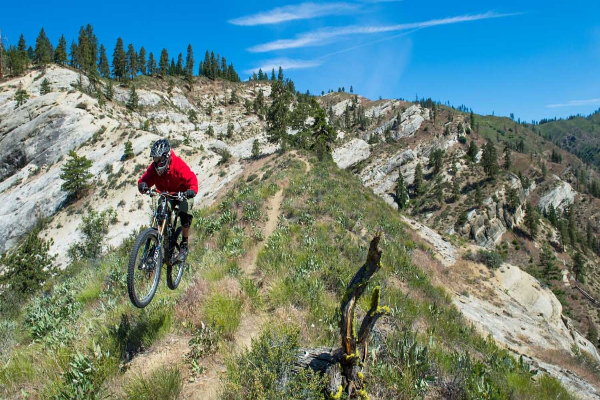Mountain biking is an exhilarating sport that combines the thrill of cycling with the beauty of nature. For enthusiasts and communities looking to build their own trails, careful planning and execution are key to creating a sustainable and enjoyable experience. This guide will walk you through the essential steps to build cool mountain biking trails, ensuring they are safe, environmentally friendly, and fun for riders of all skill levels.
Planning Your Trail
1. Understand the Terrain
- Study the landscape.
- Identify natural features like hills, valleys, and water bodies.
- Avoid sensitive areas such as wetlands and habitats of endangered species.
2. Define Your Goals
- Decide on the type of trail: beginner, intermediate, or advanced.
- Determine the primary use: leisure, racing, or skills training.
- Set long-term maintenance plans.
3. Involve the Community
- Gather input from local riders and stakeholders.
- Seek permissions from landowners and local authorities.
- Form a trail-building committee.
4. Create a Design Plan
- Use topographic maps and GPS technology.
- Plan the trail layout with switchbacks, berms, and jumps.
- Consider flow and rhythm for an enjoyable ride.
Building the Trail
5. Clear the Path
- Remove debris and vegetation.
- Use hand tools like pruners and saws for minimal impact.
- Mark the trail route clearly.
6. Construct the Trail Bed
- Dig to create a stable surface.
- Compact the soil to prevent erosion.
- Use natural materials like rocks and logs to support the trail.
7. Add Features
- Build berms for better cornering.
- Construct jumps and drops for added excitement.
- Install bridges and boardwalks over wet areas.
8. Ensure Drainage
- Design the trail to shed water.
- Create grade reversals and rolling dips.
- Avoid flat sections that can hold water.
Finishing Touches
9. Signage and Safety
- Install clear signs for direction and difficulty level.
- Mark hazards and technical sections.
- Ensure the trail is visible and easy to follow.
10. Environmental Considerations
- Restore disturbed areas with native plants.
- Minimize impact on wildlife.
- Monitor and manage erosion.
Maintenance and Community Engagement
11. Regular Upkeep
- Conduct periodic inspections.
- Repair worn or damaged sections.
- Keep the trail clear of debris and overgrowth.
12. Encourage Responsible Use
- Educate riders on trail etiquette.
- Promote “Leave No Trace” principles.
- Foster a sense of stewardship among users.
13. Host Events and Gatherings
- Organize trail-building workshops.
- Hold races and social rides.
- Build a community around the trail.
See Also: Is Mountaineering a Sport
Advanced Tips
14. Use Sustainable Materials
- Opt for eco-friendly trail-building materials.
- Recycle and reuse wherever possible.
- Reduce the carbon footprint of your project.
15. Implement Innovative Features
- Incorporate skills areas with pump tracks and rock gardens.
- Use natural obstacles to challenge riders.
- Create varied terrain to keep the trail interesting.
16. Engage with Experts
- Consult professional trail builders.
- Attend workshops and training sessions.
- Stay updated on best practices and new technologies.
17. Monitor and Adapt
- Use feedback from riders to improve the trail.
- Adapt to changing environmental conditions.
- Keep the trail evolving to meet new challenges.
Conclusion
Building a mountain biking trail is a rewarding endeavor that requires careful planning, hard work, and ongoing maintenance. By following these guidelines, you can create a trail that is not only cool but also sustainable and enjoyable for riders of all levels. Engage your community, respect the environment, and always strive for continuous improvement. Happy trail building!
FAQ: How to Build Cool Mountain Biking Trails
Q: What are the basic requirements for building a mountain biking trail?
A: The basic requirements for building a mountain biking trail include a safe and stable terrain, proper drainage, adequate space for riders to pass each other, and a variety of terrain features such as rocks, roots, and berms.
Q: How do I choose the right location for my trail?
A: Choose a location that is easily accessible, has varied terrain, and is not too steep or rocky. Consider the surrounding environment and ensure that the trail will not harm any wildlife or vegetation.
Q: What tools and materials do I need to build a trail?
A: You will need a variety of tools including a shovel, pickaxe, saw, and rake. Materials may include gravel, dirt, and wood for bridges or obstacles.
Q: How do I design the trail?
A: Start by creating a rough sketch of the trail layout. Consider the terrain features you want to include and how they will flow together. Keep in mind the skill level of the riders who will use the trail.
Q: How do I maintain the trail?
A: Regular maintenance is essential to keep the trail safe and enjoyable. This includes fixing erosion, clearing debris, and repairing any damage caused by weather or riders.
Q: How do I promote the trail to attract riders?
A: Share your trail on social media, create a website or blog, and consider partnering with local bike shops or clubs. Offer events or races to attract riders and generate interest.

